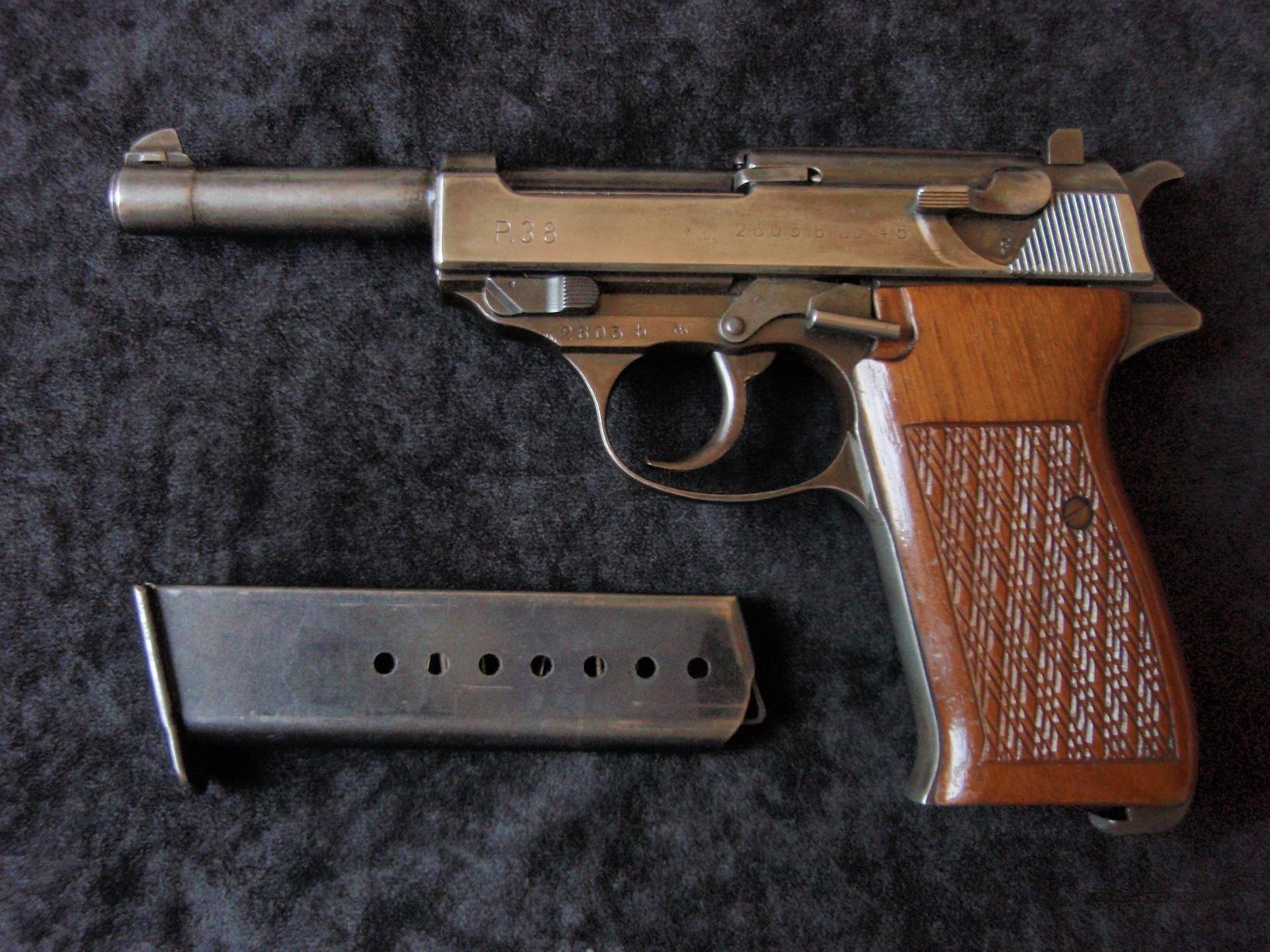

Handle since 1975 made of Dural (reinforced), code hexagon and stamped "point in a circle".Run since September 1972 as a feed run with a narrow collar and since October 1974 as a feed run with a wide collar.The bolt has been a forged part since 1972.Barrel retaining lever in a new shape since July 1968 (star).P38 Cal.9mm + final digits ”, since July 1968“ Carl Walther Waffenfabrik Ulm / Do. P38 Cal.9mm ", from October 1963" Carl Walther Waffenfabrik Ulm / Thu. Spelling of the model name "P38" (without a point)įirst lettering “Carl Walther Waffenfabrik Ulm / Do.Bolt, barrel and small parts phosphated.Handle made of black anodized light metal.The weapons manufactured by Walther in Ulm differ from those produced in Zella-Mehlis in the following points: Initially, the Wehrmacht designation "P38" was retained, and it was not until October 1963 that the official version was called "P1" and the civilian "P38". With a cartridge held in the chamber, the maximum number of shots increases to 9 shots. The rod magazine of the P1 can hold up to eight cartridges in 9 × 19 mm caliber. The barrel of the P1 has six trains and fields with right-hand twist, which set the projectile in rotation. The bolt, or slide, of the recoil-charged P1 is locked using the toggle bolt known from the P38. In contrast to the Walther P38, the grip is not made of steel, but is made of light metal, which leads to a weight reduction of around 160 g. The P1 pistol consists of four main components: The last P.38 / P1 from Ulm production has the serial number 473201 and is in the company museum. It was taken over in 1956 by the newly founded Bundeswehr without a tender and was re-produced from 1957. The pistol fires 9 mm caliber ammunition (Parabellum - 9 × 19 mm ). It is a modification of the Walther P38 of the Wehrmacht and was used for defense in close combat, in the event of failure of the main weapon, or for self-protection of command personnel and soldiers of the medical service. Also gone were the lined Bakelite grips, replaced by black plastic panels with a pebbled texture.The semi-automatic pistol Walther P1 from Walther was the standard service pistol of the German armed forces, the riot police of the federal states and the federal border police. Using an aluminum frame, it was somewhat lighter. In 1956, Walther introduced an updated P-38, adopted by the West German police and military as the P1. This would include short-barreled P-38K variants, curious long-barreled Lang models, and the reinforced P-38 II.

Within a few years, they were making the iconic P-38 once again– this time with their traditional banner logos. This led to the production in France by Manurhin which we won’t get into here.įor Carl Walther, they would rebuild in Ulm, West Germany in 1953. The three wartime P-38s makers all lost their factories during the conflict. Notably, the Russians still have thousands in arsenal storage although they gave away crate loads as an aid to budding Communist regimes around the world during the Cold War. Servicemen to America as trophies and were impounded by Allied forces. With such a huge glut of guns surrendered in 1945, thousands were brought back both by U.S. In all, over a million P-38s were produced in wartime Germany for both military and police issue. The pistol also has ribbed phenolic AEG Grips, which are correct to period Mauser-made P38s. To put this into historical perspective, this is just after the famous D-Day invasion in Normandy. This pistol’s “byf 44” code, “WaA145” Waffenamt inspector’s marks and 7168w serial number puts its manufacture about July 1944. Mauser made P-38s at their facility in Oberndorf am Neckar in 1942 under a variety of manufacturer’s codes.


 0 kommentar(er)
0 kommentar(er)
